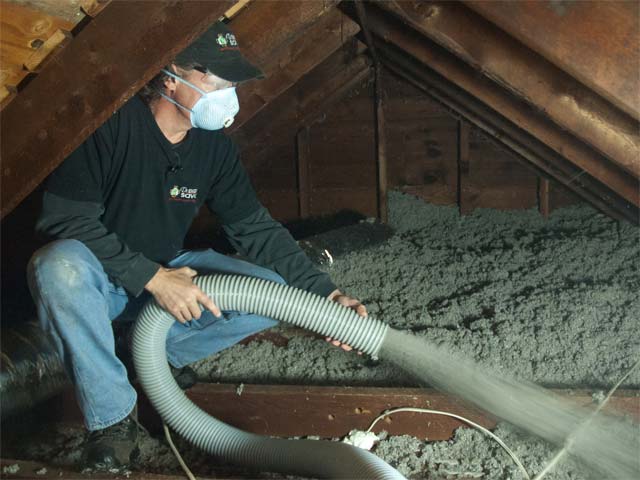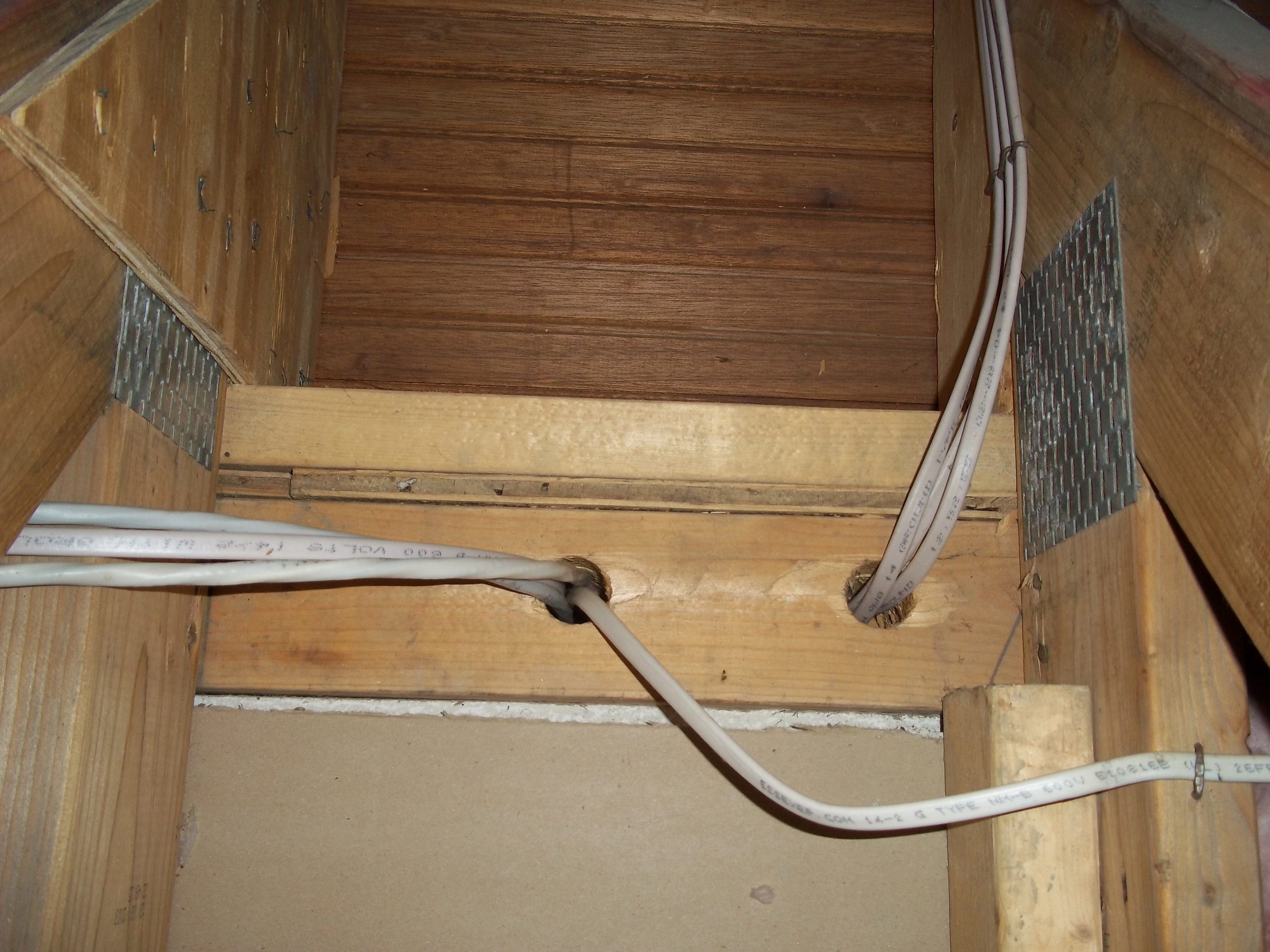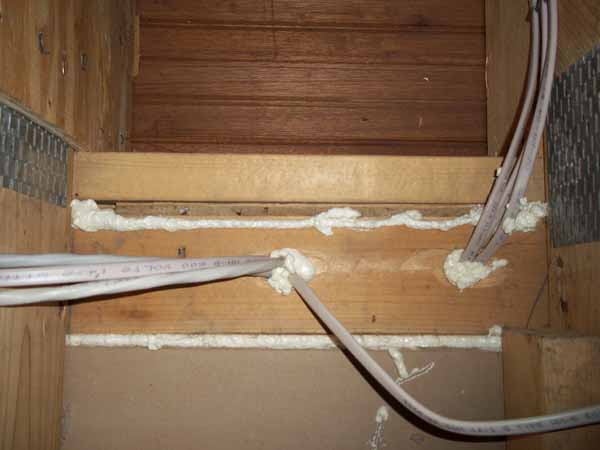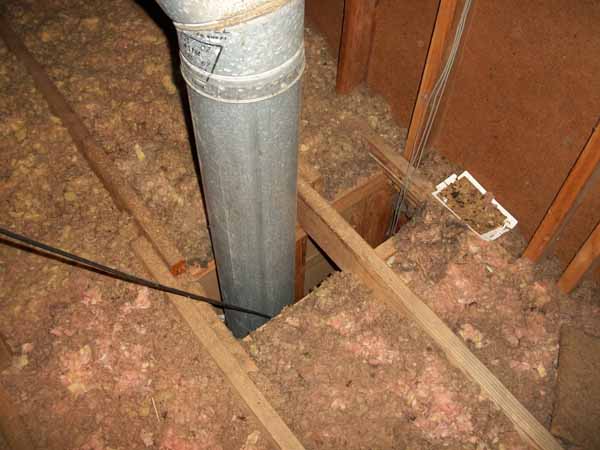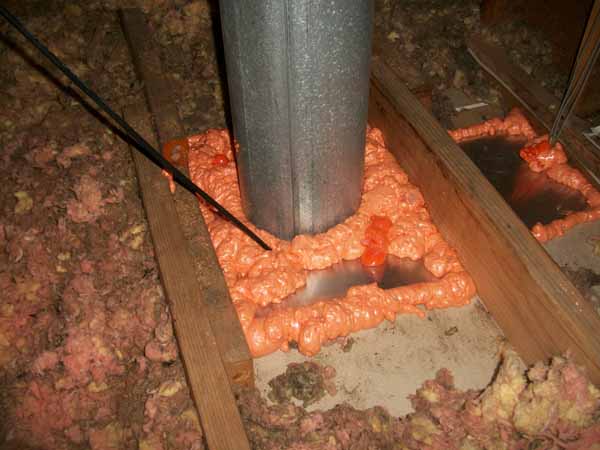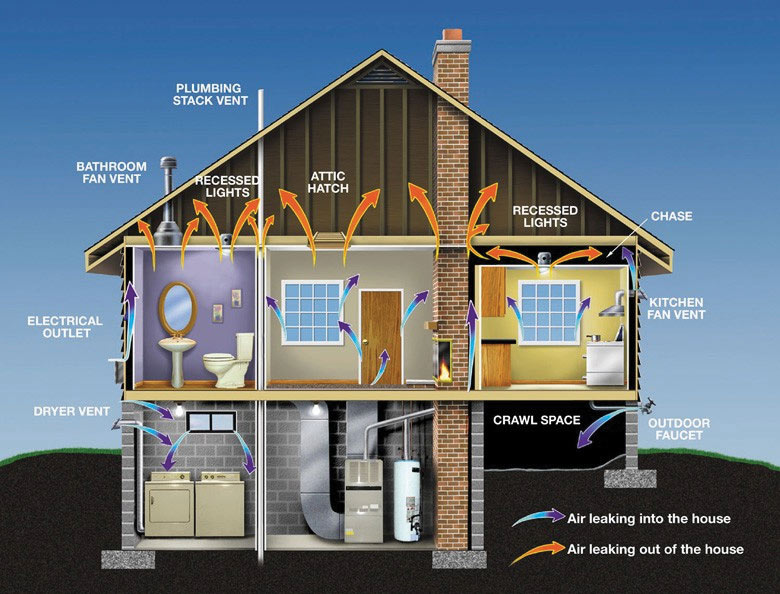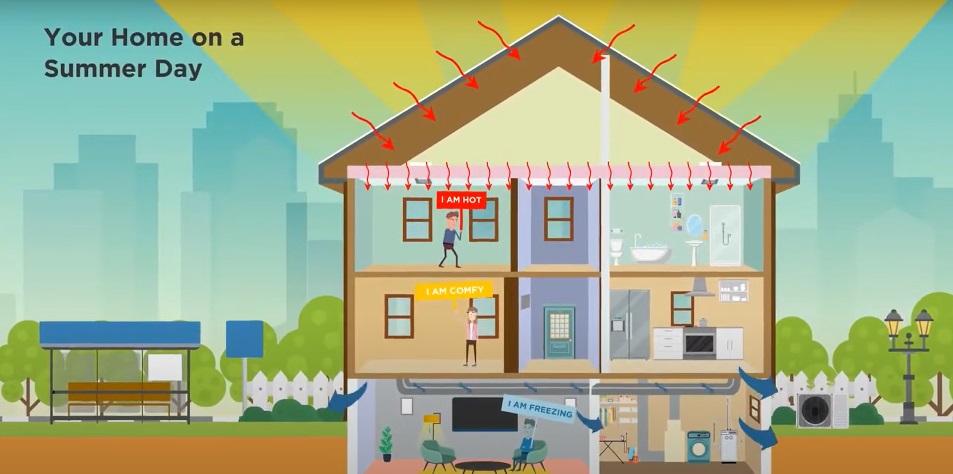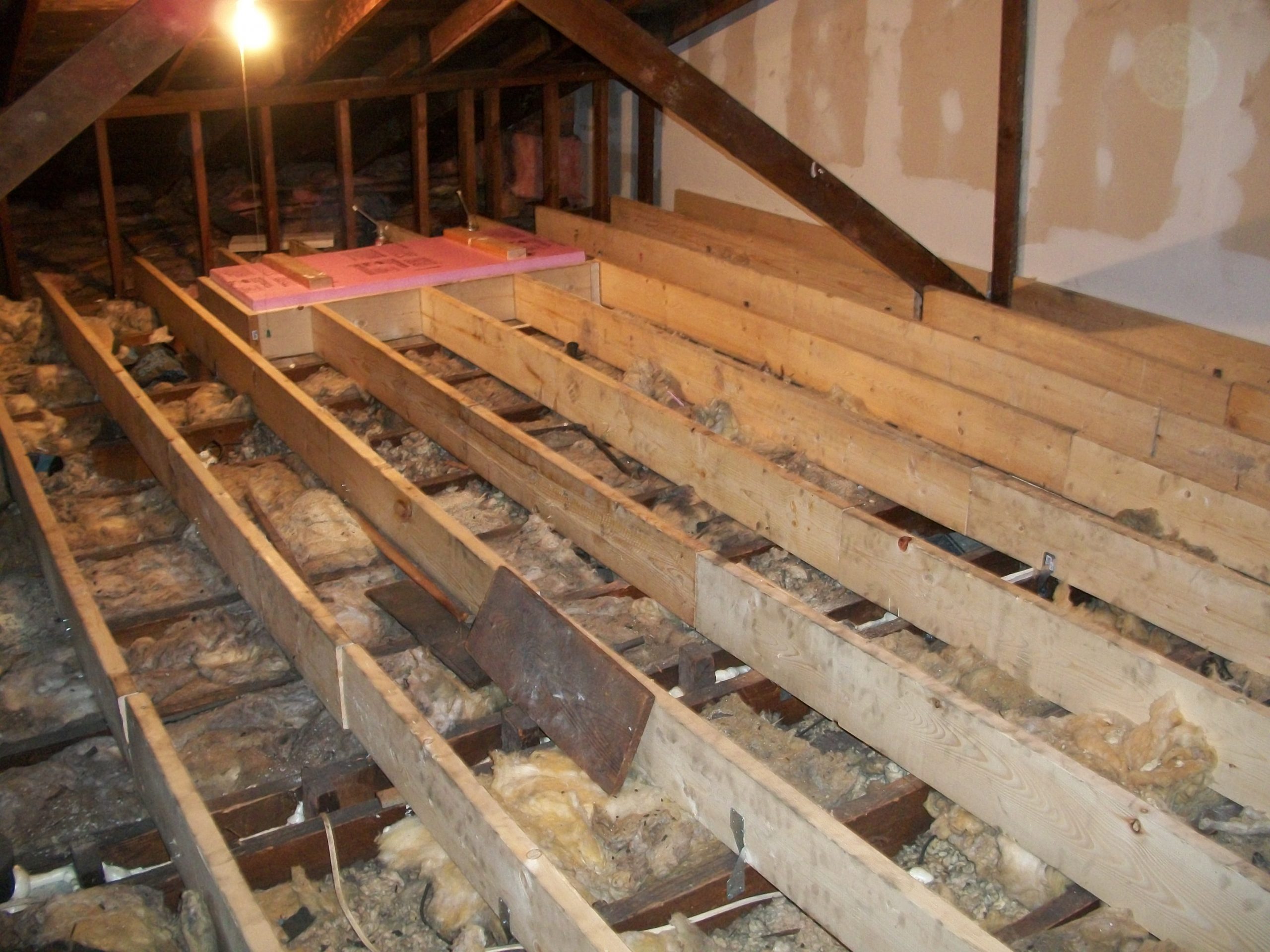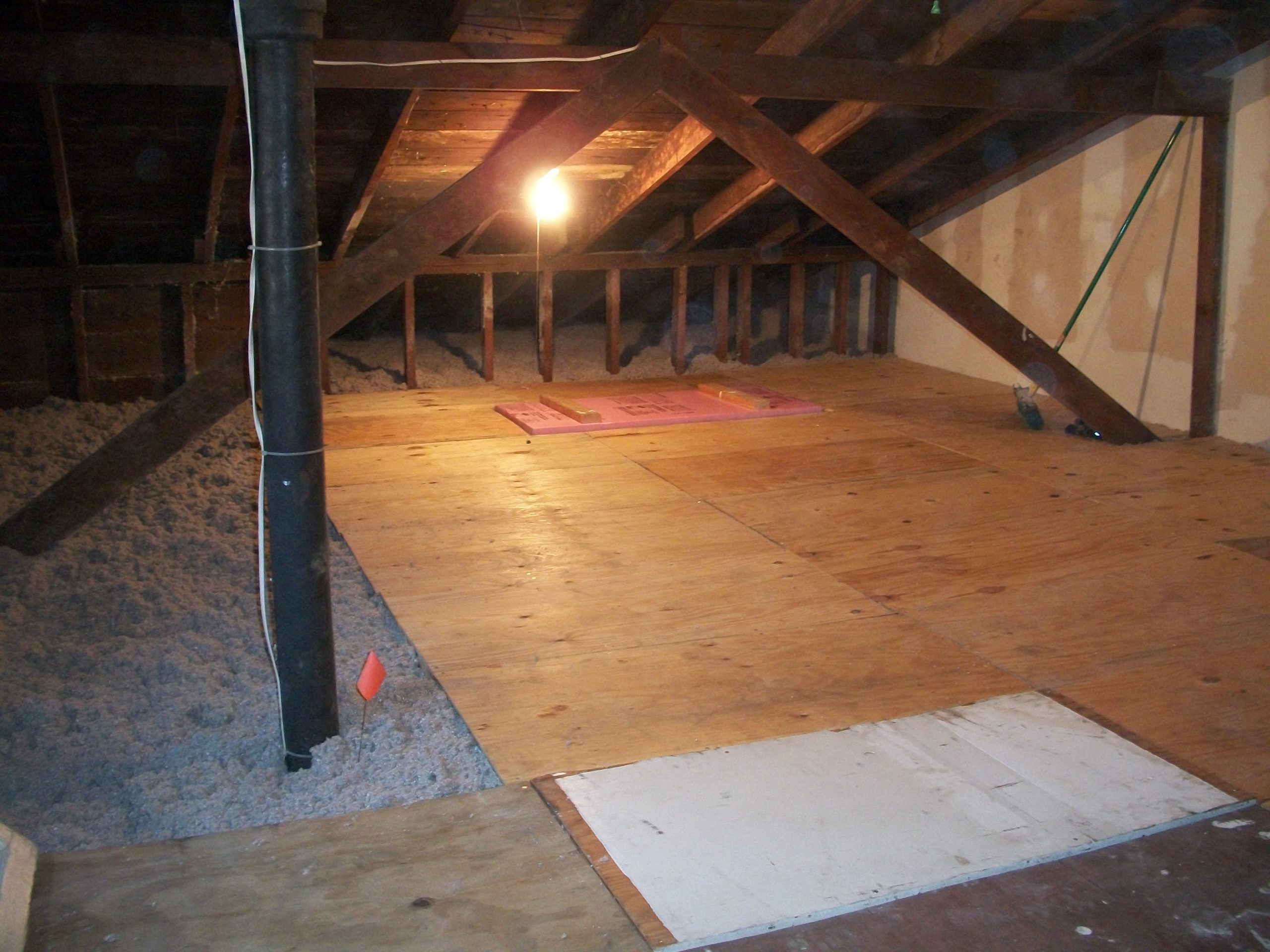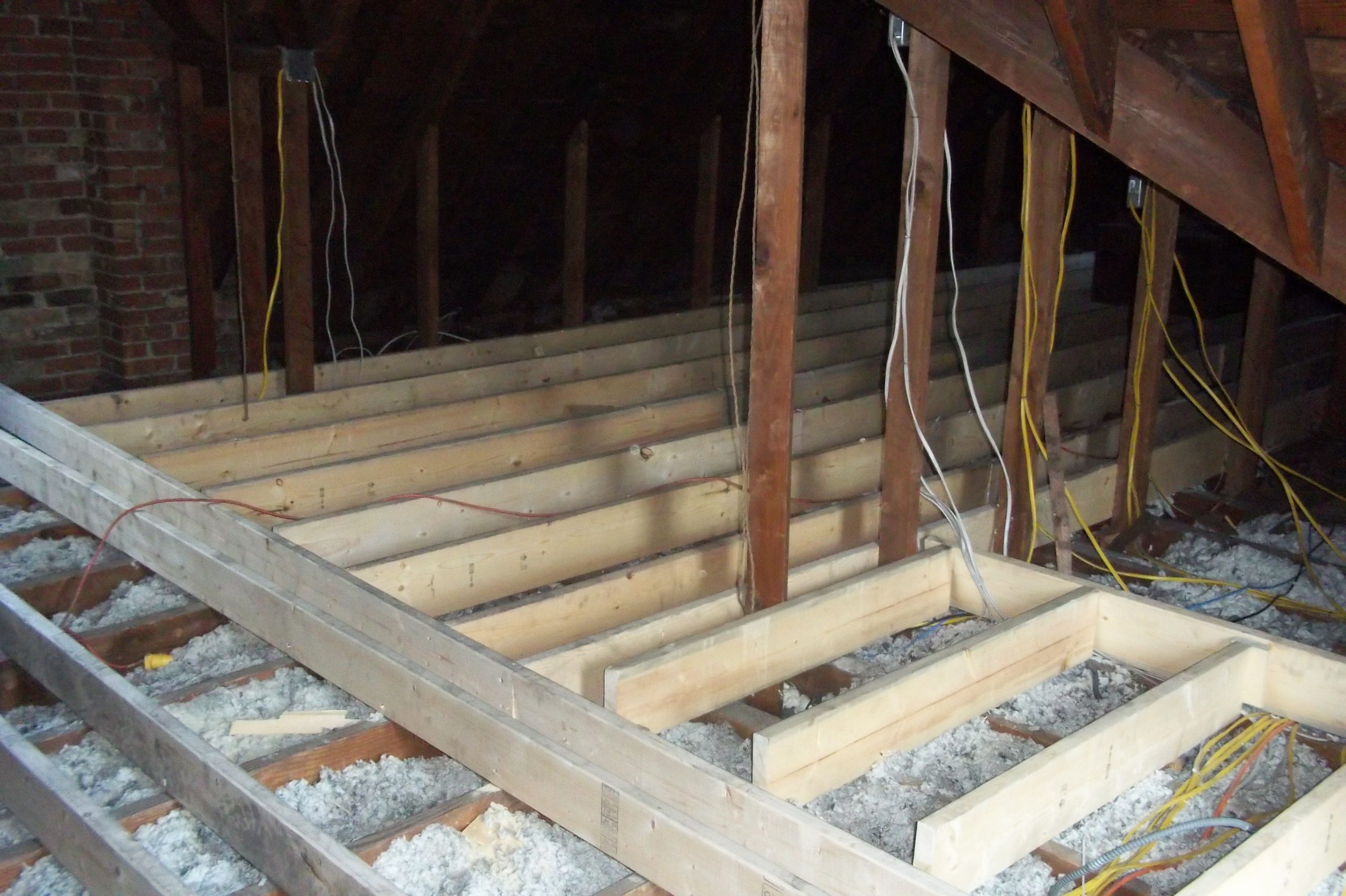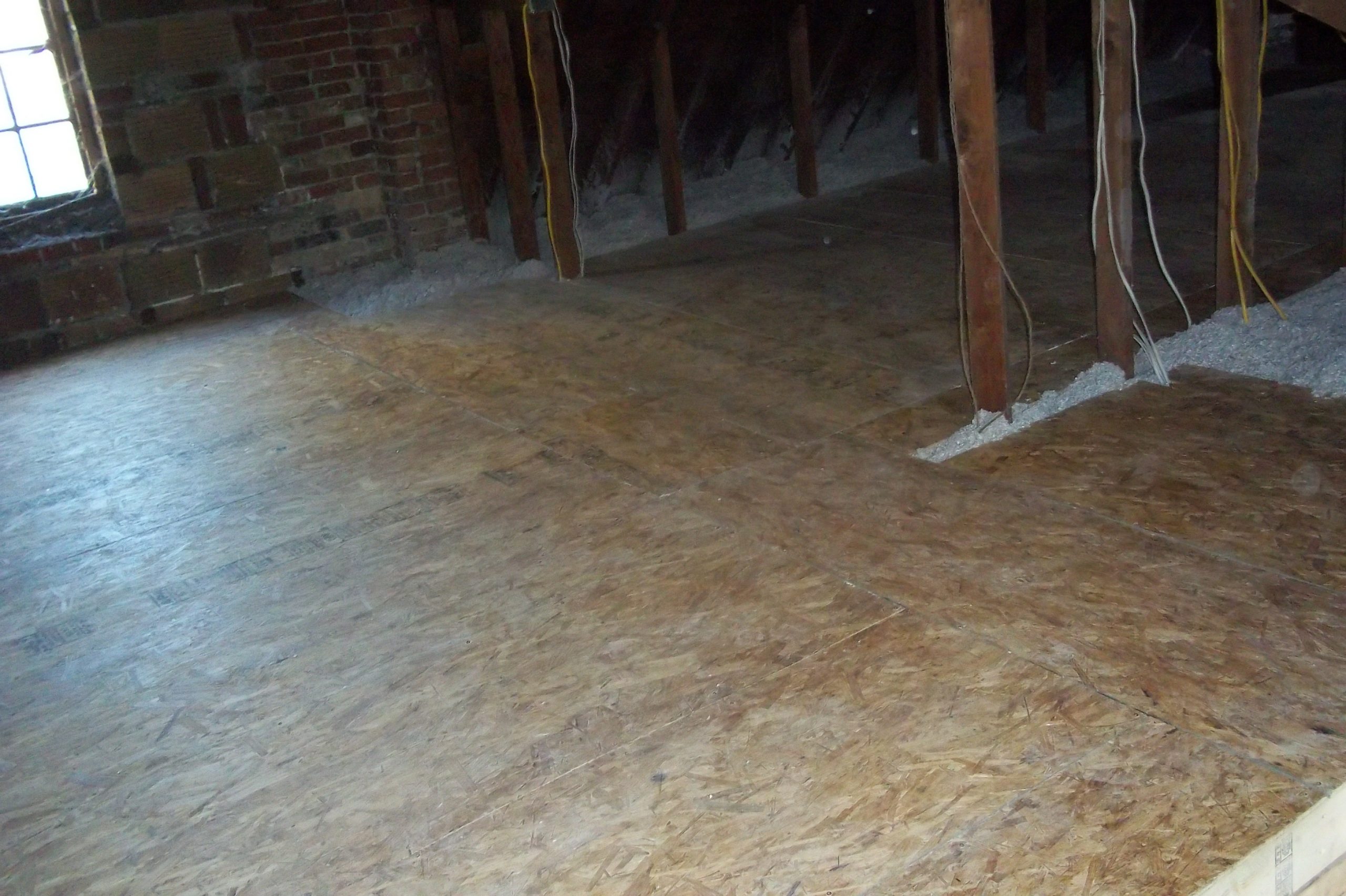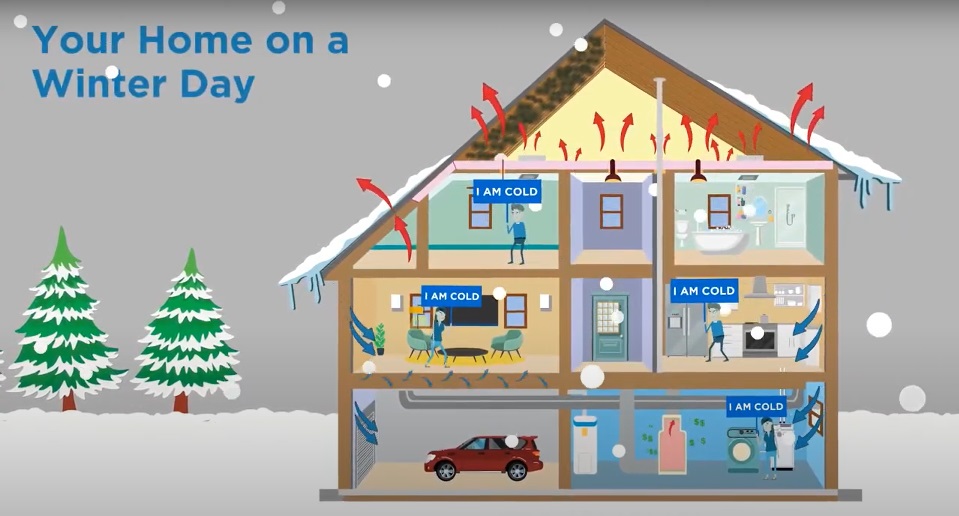Why is Your Home’s Attic Insulation so Important?
Your Pittsburgh home’s attic insulation dramatically affects how efficiently your home heats AND cools itself!
This is because during the winter, the bulk of your home’s heat loss occurs through the attic (because heat rises). And during our HOT Pittsburgh summers, the majority of your home’s heat gain often occurs through the attic as the sun heats the roof to temperatures of 160 degrees and above! When your home’s attic is air sealed and the insulation is increased to a level of R-49 with blown in cellulose insulation, you will instantly SAVE money on your utility bills while improving your comfort year round!
Will Upgrading my Attic Insulation Save Me Money?
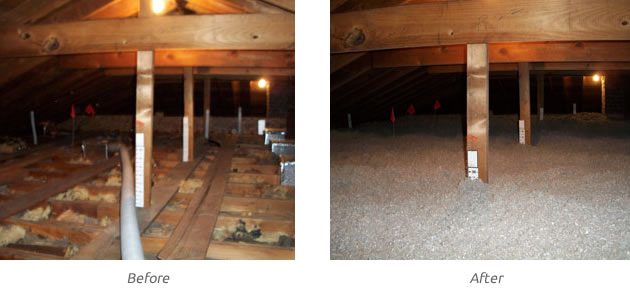
When done correctly, upgrading your home’s attic insulation will save you money and dramatically improve your home’s comfort. In many homes, heating and cooling costs can typically be reduced 25-50% just by properly air sealing and re-insulating the attic! Your home will feel much warmer in the winter, but also much cooler during hot summer months. Most homeowners can expect a payback time (in terms of energy savings) of 3-5 years, but the improvement in comfort will be immediate!
What Separates Insulwise Energy and Comfort Solutions from our Competition?
At Insulwise, our process is to first air seal all of the air leaks in your attic and only then add additional attic insulation. Homes lose substantial amounts of heated air through unseen air leaks in your attic floor such as around plumbing pipes, wire holes, recessed lights, leaky pull-down attic ladders, flu pipes etc. When you feel a draft in your home, you are in fact feeling the effect of air leakage. We use spray foam insulation to seal all of the air leaks in your attic.
So how will you know if another insulation company’s practices are woefully out of date? If they tell you that air sealing doesn’t matter, is a waste of time, or that the insulation they blow in will “seal all the leaks” — that’s a good indication. But don‘t take our word for it. Check out our Independent Research page or simply do a Google search for ‘air sealing.’ Simply put, the forces behind Stack Effect will cause your home’s conditioned air to leak directly through blown or rolled insulation, if the penetrations beneath are not first sealed. Most insulation companies do little if any air-sealing work, but will charge you as if they do!
How Do I Know if I Need More Attic Insulation?
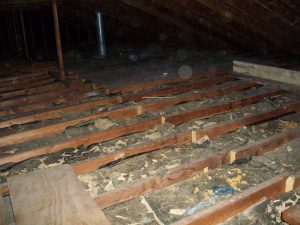
If when you look at your attic floor you can see the floor joists, than you NEED additional attic insulation. Also, if during the summer, your upper floor feels much hotter than the lower ones, you would also benefit significantly from upgrading your attic insulation. According to the Energy Star Climate Zone Map as well as current insulation codes (as per 2018), attic insulation in Southwestern Pennsylvania should be a minimum of R-49. We first determine the R-Value of your existing insulation, and from there determine how much additional cellulose insulation we need to add in order to get your attic insulation to an R-49 value.
I Already Have Some Pink Stuff…Isn’t That Good Enough?
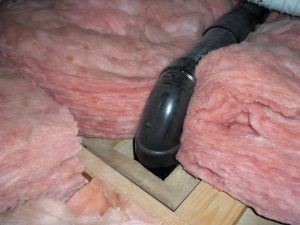
Rolled fiberglass batting almost always underperforms its ‘stated R-Value.’ All attic floors have irregularities such as plumbing pipes like you see to the left, wiring, joists, recessed lights, junction boxes, bath fans, etc. These surface irregularities make it impossible for rolled fiberglass insulation to fit snugly against your ceiling. When gaps in the insulation form as a result, significant energy loss occurs where there is bare ceiling, or where the sides of the insulation are exposed to.
Why are gaps in insulation so important? Imagine partially unzipping your jacket while standing outside on a cold winter day. Despite having your jacket “mostly on,” that opening makes a huge difference! Well, it’s the same with insulation in your attic.
With our blown-in cellulose attic insulation process, the insulation conforms perfectly to your attic floor. All of the gaps, voids, and odd-shaped nooks and crannies are filled in completely. We typically air seal the attic floor first, then blow in additional cellulose over top of the existing insulation to achieve the Department of Energy recommended R-49 insulating value.
I Already Have Some Blown-in Pink, White, or Yellow Stuff…Isn’t That Good Enough?
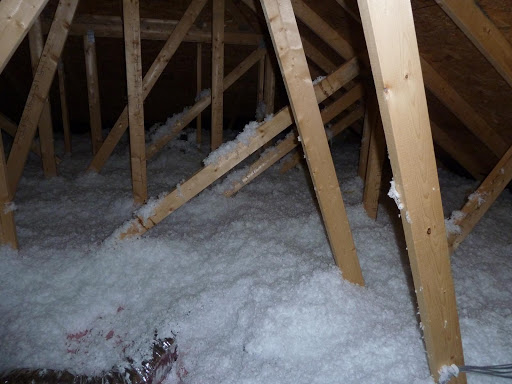
Probably not. It’s long been our experience at Insulwise that blown-in fiberglass insulation massively under performs. Why do we feel this way? Over the years we’ve re-insulated hundreds and hundreds of attics in the Pittsburgh area that already had copious amounts of blown-in fiberglass installed. Those home owners reached out to us because their homes were either too hot during the summer, too cold in the winter, or their bills were too high. Simply put, blown fiberglass is not nearly as effective as blown in cellulose insulation.
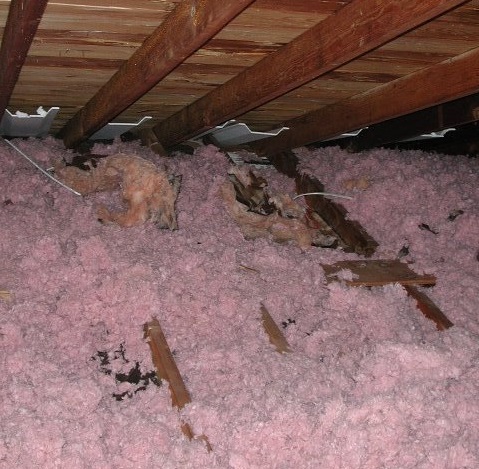
Why? The R-Value of blown fiberglass is about R- 2.5 per inch, versus R-3.7 for cellulose insulation. That’s nearly a 50% advantage in insulating effectiveness for cellulose! Additionally, after several weeks blown cellulose settles slightly and forms a “crust” on top of it that cold air sits on top of during the winter. Blown fiberglass on the other hand stays amazingly light, fluffy, and “airy.” This tendency allows heavy, dense, cold attic air to “fall” down through it during the winter, allowing convection loops to form within it. These convection loops sharply lower it’s functional R-Value, decreasing it’s effectiveness at the worst possible time!
Why Does My Home Get so Hot on Summer Days?!
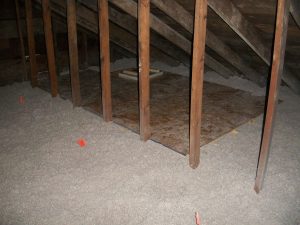
On a hot summer day, the sun can heat the shingles on an average home’s roof to over 160 degrees! This intense heat then radiates into the attic itself. And if your attic is poorly insulated or insulated with old fiberglass, then the heat gets transferred directly into the rooms below, making your home uncomfortable. In most cases the home owner either suffers or runs their air conditioner all day long to fight the heat gain which is coming from the attic. Neither case is a cheap or ideal solution. At Insulwise we call this Summertime Syndrome (see link for Summertime Syndrome Cartoon below!)
When you have Insulwise properly air seal your attic (which will keep your air conditioning from leaking out!) and then blow in cellulose insulation to raise your attic insulation to a value of R-49, you will notice the difference that day! During hot summer weather your home will not only be more comfortable, but your air conditioning bills will decrease dramatically!
Click below to watch our short but informative Summertime Syndrome cartoon.
What if I Want to Use My Attic For Extra Storage?
At Insulwise, we have a process for building raised storage pads in attics that allows you to reach your attic insulation goal of R-49, but also maintain a useful storage space for your odds and ends. We first determine how much additional attic insulation is needed, then build a frame using studs that are wide enough to accommodate the additional insulation. We have built dozens of storage pads to accommodate a wide variety of attic shapes and sizes. We can also assist you in emptying your attic prior to performing the work if needed!
What about the AC, Furnace Unit, or Ductwork in My Attic?
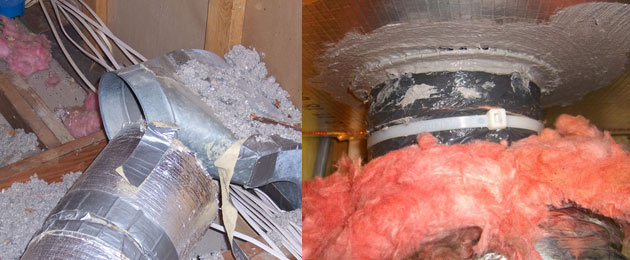
When we encounter HVAC equipment in attics, we always recommend that the customer have us re-seal all of the duct connections with foam sealant, flex ties, and sometimes screws. Many contractors in our area still use $3 a roll duct tape to seal HVAC systems when installing them, which is an outdated, if not negligent practice. The problem is that summer attic heat breaks down the fabric and adhesives in these tapes. Often in attics we find ductwork either completely or partially disconnected — and blowing conditioned air freely into attic spaces.
My Home has Ice Dams and Icicles, Can This be Fixed?

Ice dams and icicles often form when heat from the home leaks through the attic floor and melts the snow on your roof. The water then drains downward to where it is colder and re-freezes, forming ice dams and icicles. Although there are no guarantees (natural freeze/ thaw cycles can cause ice damming too), incidences of ice damming and icicles can usually be reduced with effective air-sealing and attic insulation measures are performed.
There are a variety of problems that affect poorly insulated homes during the winter. The problems include high heating bills and furnaces that never seem to shut off, cold rooms, floors, and draftiness, to ice dams and icicles, and even attic mold. Watch our Wintertime Syndrome animation below to see if some of these issues look familiar to your home.
Click below to watch our short but informative Wintertime Syndrome cartoon.
What Type of Insulation Does Insulwise Primarily Use?
For the majority of home insulating needs we use blown in cellulose insulation. Cellulose is incredibly user friendly in that it does not irritate the skin, is a highly effective attic insulation with an R-Value of 3.7 per inch, is flame resistant, completely non-toxic, and is an incredibly “green” product because it is made from recycled paper. If you want to read more about it I recommend checking out the highly informative and independent Wikipedia page. From time to time we will use other types of insulation including spray foam, fiberglass, and rock wool for specialty applications.

 Two Story Colonial Home
Two Story Colonial Home 1950’s Ranch Style Home
1950’s Ranch Style Home Two Story Contemporary Home
Two Story Contemporary Home Modern Patio Home
Modern Patio Home Three Story Home
Three Story Home Cape Cod Home
Cape Cod Home Attic Insulation
Attic Insulation Floor Insulation (Garage Ceiling)
Floor Insulation (Garage Ceiling) Wall Insulation
Wall Insulation Basement Insulation
Basement Insulation Air Leak Sealing
Air Leak Sealing